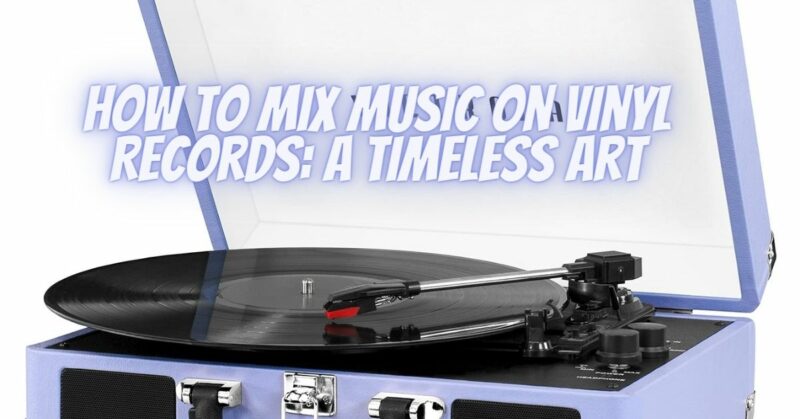Mixing music on vinyl records is an art form that dates back to the early days of DJing and has persisted through decades of technological advancements. While digital platforms and CDJs have become the norm in modern DJ setups, vinyl records continue to hold a special place in the hearts of many DJs and music enthusiasts. Mixing music on vinyl records offers a unique tactile experience and a connection to the roots of DJ culture. In this article, we’ll explore the essential steps and techniques to mix music on vinyl records.
- Gather Your Equipment
Before you start mixing on vinyl records, you’ll need the following equipment:
- Turntables: Invest in quality turntables with adjustable pitch control and a sturdy platter. Technics 1200s are legendary in the DJ world, but there are other reliable options available.
- Mixer: Choose a DJ mixer that suits your style and budget. A two-channel mixer is sufficient for basic mixing, but more channels offer greater flexibility.
- Vinyl Records: Build a collection of vinyl records spanning various genres. The quality and condition of your records will significantly impact your mixing experience.
- Slipmats: Slipmats are placed on the turntable platters to reduce friction and allow for smoother mixing.
- Needles and Cartridges: Invest in high-quality needles and cartridges for optimal sound quality and tracking.
- Set Up Your Turntables
Properly setting up your turntables is crucial for smooth mixing. Here’s a step-by-step guide:
- Place your turntables on a stable surface, preferably isolated from vibrations.
- Ensure they are level using a bubble level.
- Set the turntable’s tracking force and anti-skate settings according to your cartridge’s specifications.
- Calibrate the pitch control to zero, ensuring that both turntables match.
- Adjust the tonearm’s height and balance to ensure proper tracking of the record.
- Cueing and Timing
Cueing and timing are essential aspects of vinyl mixing:
- Cueing: Use the cue lever to lift the tonearm gently and place the needle on the starting groove of the record. Practice cueing to precise points on the record.
- Timing: Develop a keen sense of timing to start the second record at the right moment. This comes with practice and a deep understanding of the music’s structure.
- Beatmatching
Beatmatching is the process of aligning the beats of two records for a seamless transition:
- Listen to the beats of the first track through your headphones.
- Use the pitch control to adjust the speed of the second turntable until both tracks are in sync.
- Nudge the platter or use the pitch control to fine-tune the alignment until the beats are perfectly matched.
- Mixing
Once the beats are matched, you can smoothly transition from one track to the next:
- Gradually fade in the second track using the mixer’s crossfader or channel faders.
- Pay attention to the EQ settings to ensure a balanced mix of frequencies.
- Use techniques like cutting, scratching, and backspinning to add creativity to your mixes.
- Practice and Experiment
Mixing on vinyl records requires patience and practice. Experiment with different records, genres, and techniques to develop your unique style. Record your mixes and listen critically to identify areas for improvement.
Conclusion
Mixing music on vinyl records is a timeless art that offers a tactile and authentic DJing experience. While it may be more challenging than digital DJing, the rewards are well worth the effort. With the right equipment, practice, and dedication, you can master the art of mixing on vinyl records and create unforgettable DJ sets that resonate with music lovers of all generations. So, dust off those vinyl records, set up your turntables, and let the magic of vinyl mixing take you on a musical journey like no other.


